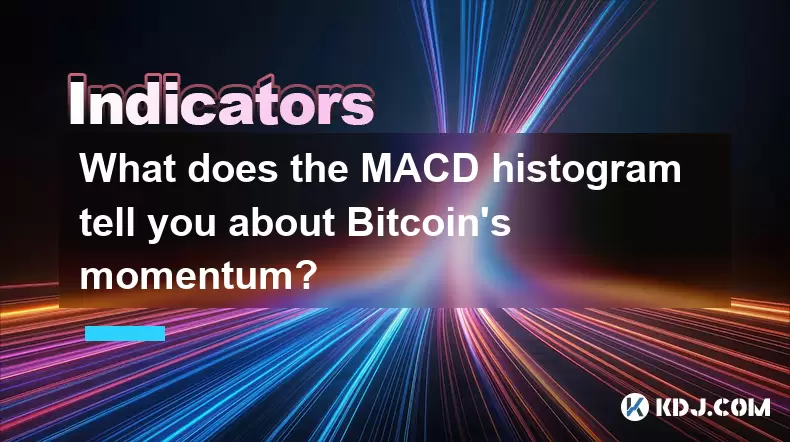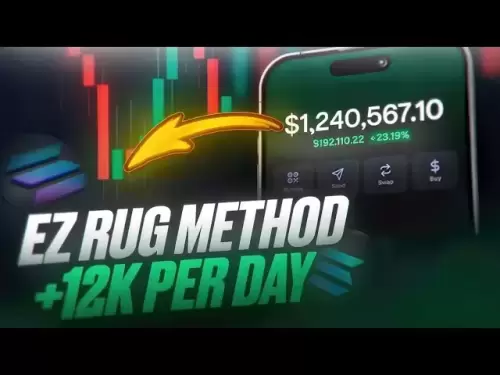-
 Bitcoin
Bitcoin $108,522.9936
0.51% -
 Ethereum
Ethereum $2,600.2119
2.25% -
 Tether USDt
Tether USDt $1.0001
0.00% -
 XRP
XRP $2.3065
1.88% -
 BNB
BNB $661.9093
0.34% -
 Solana
Solana $150.9961
1.40% -
 USDC
USDC $0.9999
0.00% -
 TRON
TRON $0.2877
0.21% -
 Dogecoin
Dogecoin $0.1708
1.78% -
 Cardano
Cardano $0.5863
1.70% -
 Hyperliquid
Hyperliquid $39.0718
4.52% -
 Bitcoin Cash
Bitcoin Cash $507.4600
2.09% -
 Sui
Sui $2.9070
2.06% -
 Chainlink
Chainlink $13.8666
4.64% -
 UNUS SED LEO
UNUS SED LEO $9.1277
0.82% -
 Stellar
Stellar $0.2624
5.86% -
 Avalanche
Avalanche $18.1961
2.40% -
 Shiba Inu
Shiba Inu $0.0...01182
1.77% -
 Toncoin
Toncoin $2.8141
2.42% -
 Hedera
Hedera $0.1611
3.70% -
 Litecoin
Litecoin $87.6537
1.88% -
 Monero
Monero $317.0356
0.02% -
 Polkadot
Polkadot $3.4327
2.63% -
 Dai
Dai $1.0000
-0.01% -
 Ethena USDe
Ethena USDe $1.0006
0.05% -
 Bitget Token
Bitget Token $4.3043
0.50% -
 Uniswap
Uniswap $7.6006
2.93% -
 Aave
Aave $293.0019
4.60% -
 Pepe
Pepe $0.0...01007
3.08% -
 Pi
Pi $0.4658
2.42%
What does the MACD histogram tell you about Bitcoin's momentum?
The MACD histogram helps Bitcoin traders spot momentum shifts and potential trend reversals by tracking the gap between the MACD line and signal line.
Jul 09, 2025 at 06:21 am

Understanding the MACD Histogram in Cryptocurrency Trading
The MACD (Moving Average Convergence Divergence) histogram is a powerful technical analysis tool used by traders to gauge momentum and potential trend reversals. In the context of Bitcoin trading, the MACD histogram provides critical insights into the strength and direction of price movements. It visualizes the difference between the MACD line and the signal line, helping traders identify when bullish or bearish momentum is increasing or decreasing.
What does this mean for Bitcoin? Because Bitcoin’s price is highly volatile and often moves in strong trends, understanding shifts in momentum can help traders make informed decisions about entry and exit points.
How the MACD Histogram Reflects Momentum Shifts
The MACD histogram plots bars above and below a zero line. When the histogram bars are above the zero line and growing taller, it indicates that the bullish momentum is strengthening. Conversely, when the bars are below the zero line and becoming more negative, it signals increasing bearish momentum.
In Bitcoin trading:
- A rising histogram suggests that buyers are gaining control.
- A falling histogram implies that sellers are taking over.
Traders should closely monitor these shifts because they often precede visible changes in price direction on the chart.
Interpreting Zero Line Crosses in Bitcoin Charts
One of the most significant signals provided by the MACD histogram is its crossing of the zero line. When the histogram crosses from below to above the zero line, it indicates a potential bullish reversal. Similarly, a cross from above to below the zero line may suggest a bearish reversal.
To apply this in practice:
- Look at historical Bitcoin charts where such crossovers occurred.
- Observe whether the price followed through in the expected direction after the crossover.
- Combine this with volume data to confirm the strength behind the move.
This kind of analysis helps traders filter out false signals and focus on high-probability setups.
Divergences Between Price and the MACD Histogram
A key concept in technical analysis is divergence — when the price makes a new high or low but the MACD histogram does not confirm it. This discrepancy often signals weakening momentum and an impending reversal.
For example:
- If Bitcoin reaches a new high but the MACD histogram forms a lower peak, this is a bearish divergence.
- If Bitcoin hits a new low while the histogram shows a higher trough, it's a bullish divergence.
These divergences are especially valuable in identifying turning points in the market before they become apparent in price action.
Using the MACD Histogram for Entry and Exit Points
Many traders use the MACD histogram to time their entries and exits. Here’s how it can be applied step-by-step:
- Watch for the histogram bars to start shrinking after a sustained move — this suggests momentum is slowing down.
- If you're long and the histogram turns downward sharply, consider exiting part or all of your position.
- If you're looking to enter a trade, wait for the histogram to turn in the desired direction and confirm with other indicators like RSI or volume.
- Avoid entering trades solely based on histogram readings without confirming with candlestick patterns or support/resistance levels.
By integrating the histogram into a broader trading strategy, traders can better manage risk and optimize timing in Bitcoin positions.
Frequently Asked Questions
Q: Can the MACD histogram predict exact price targets for Bitcoin?
No, the MACD histogram does not provide specific price targets. It measures momentum and potential trend changes, but not the magnitude of future price movements.
Q: Is the MACD histogram reliable during sideways Bitcoin markets?
During consolidation phases, the histogram may produce frequent but misleading signals due to choppy price action. Traders should use additional tools like Bollinger Bands or support/resistance zones to validate signals.
Q: Should I rely only on the MACD histogram for trading Bitcoin?
It is generally not advisable to base trading decisions solely on one indicator. Combining the MACD histogram with other technical tools such as moving averages, volume, and candlestick patterns improves accuracy and reduces false signals.
Q: How often should I check the MACD histogram when monitoring Bitcoin?
The frequency depends on your trading strategy. Day traders might review it every few minutes, while swing traders could analyze it once per hour or daily. Always align your review schedule with your chosen time frame and trading goals.
Disclaimer:info@kdj.com
The information provided is not trading advice. kdj.com does not assume any responsibility for any investments made based on the information provided in this article. Cryptocurrencies are highly volatile and it is highly recommended that you invest with caution after thorough research!
If you believe that the content used on this website infringes your copyright, please contact us immediately (info@kdj.com) and we will delete it promptly.
- Crypto ATMs, New Zealand, and Money Laundering: A Crackdown in the Kiwi Crypto Scene
- 2025-07-09 16:50:12
- Shiba Inu (SHIB) in 2030: Could You Be a Crypto Millionaire?
- 2025-07-09 16:50:12
- HTX Security: Navigating Crypto Hacks and Risk Management in the Wild West
- 2025-07-09 17:10:13
- Polygon's POL Token Surges Ahead of Heimdall v2 Upgrade: A New York Minute on What's Happening
- 2025-07-09 17:10:13
- Coin Master Free Spins: Grab 'Em While They're Hot! (July 8, 2025)
- 2025-07-09 17:15:12
- Meme Coin Mania: How to Create a Coin That Doesn't Flop (and Maybe Even Moons!)
- 2025-07-09 17:15:12
Related knowledge

How to trade Dogecoin based on funding rates and open interest
Jul 07,2025 at 02:49am
<h3>Understanding Funding Rates in Dogecoin Trading</h3><p>Funding rates are periodic payments made to either long or short traders ...

What is the 'God Mode' indicator for Dogecoin
Jul 07,2025 at 04:42pm
<h3>Understanding the 'God Mode' Indicator</h3><p>The 'God Mode' indicator is a term that has emerged within cryptocurrency trading ...

Using Gann Fans on the Dogecoin price chart
Jul 07,2025 at 09:43pm
<h3>Understanding Gann Fans and Their Relevance in Cryptocurrency Trading</h3><p>Gann Fans are a technical analysis tool developed b...

How to spot manipulation on the Dogecoin chart
Jul 06,2025 at 12:35pm
<h3>Understanding the Basics of Chart Manipulation</h3><p>Chart manipulation in the cryptocurrency space, particularly with Dogecoin...

Dogecoin market structure break explained
Jul 07,2025 at 02:51am
<h3>Understanding the Dogecoin Market Structure</h3><p>Dogecoin, initially created as a meme-based cryptocurrency, has evolved into ...

How to backtest a Dogecoin moving average strategy
Jul 08,2025 at 04:50am
<h3>What is a Moving Average Strategy in Cryptocurrency Trading?</h3><p>A moving average strategy is one of the most commonly used t...

How to trade Dogecoin based on funding rates and open interest
Jul 07,2025 at 02:49am
<h3>Understanding Funding Rates in Dogecoin Trading</h3><p>Funding rates are periodic payments made to either long or short traders ...

What is the 'God Mode' indicator for Dogecoin
Jul 07,2025 at 04:42pm
<h3>Understanding the 'God Mode' Indicator</h3><p>The 'God Mode' indicator is a term that has emerged within cryptocurrency trading ...

Using Gann Fans on the Dogecoin price chart
Jul 07,2025 at 09:43pm
<h3>Understanding Gann Fans and Their Relevance in Cryptocurrency Trading</h3><p>Gann Fans are a technical analysis tool developed b...

How to spot manipulation on the Dogecoin chart
Jul 06,2025 at 12:35pm
<h3>Understanding the Basics of Chart Manipulation</h3><p>Chart manipulation in the cryptocurrency space, particularly with Dogecoin...

Dogecoin market structure break explained
Jul 07,2025 at 02:51am
<h3>Understanding the Dogecoin Market Structure</h3><p>Dogecoin, initially created as a meme-based cryptocurrency, has evolved into ...

How to backtest a Dogecoin moving average strategy
Jul 08,2025 at 04:50am
<h3>What is a Moving Average Strategy in Cryptocurrency Trading?</h3><p>A moving average strategy is one of the most commonly used t...
See all articles

























































































